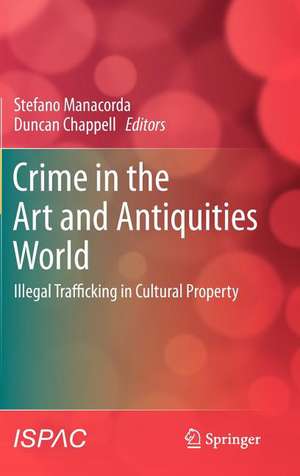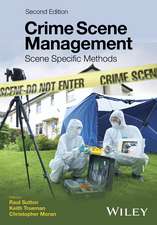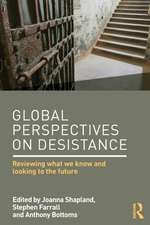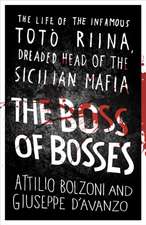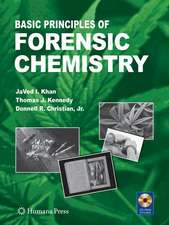Crime in the Art and Antiquities World: Illegal Trafficking in Cultural Property
Editat de Stefano Manacorda, Duncan Chappellen Limba Engleză Hardback – 7 mar 2011
The book Crime in the Art and Antiquities World has contributions both from researchers specializing in the illegal trafficking of art, and representatives of international institutions involved with prevention and detection of cultural property-related crimes, such as Interpol and UNESCO.
This work is a unique and useful reference for scholars and private and public bodies alike.
This innovative volume also includes an Appendix of the existing legal texts, i.e. international treaties, conventions, and resolutions, which have not previously been available in a single volume.
As anyone who has undertaken research or study relating to the protection of cultural heritage discovers one of the frustrations encountered is the absence of ready access to the multi- various international instruments which exist in the field. Since the end of the Second World War these instruments have proliferated, first in response to increasing recognition of the need for concerted multinational action to give better protection to cultural property during armed conflict as well as ensuring the repatriation of cultural property looted during such conflict. Thus the international community agreed in 1954 upon a Convention for the Protection of Cultural Property in the Event of Armed Conflict.
That Convention, typically referred to as the Hague Convention of 1954, is now to be found reproduced in the Appendix to this book (Appendix I) together with 25 other important and diverse documents that we believe represent a core of the essential international sources of reference in this subject area. In presenting these documents in one place we hope that readers will now experience less frustration while having the benefit of supplementing their understanding and interpretation of the various instruments by referring to individual chapters in the book dealing with a particular issue or topic. For example, Chapter 9 by Mathew Bogdanos provides some specific and at times rather depressing descriptions of the application in the field of the Hague Convention 1954, and its Protocols (Appendices II and III), to the armed conflict in Iraq. Reference may also be had to the resolution of the UN Security Council in May 2003 (Appendix VI) urging Member States to take appropriate steps to facilitate the safe return of looted Iraqi cultural property taken from the Iraq National Museum, the National Library and other locations in Iraq. Despite such pleas the international antiquities market seems to have continued to trade such looted property in a largely unfettered manner, as demonstrated by Neil Brodie in Chapter 7.
Fittingly, as referred to in the Preface to this book, the last document contained in the Appendix (Appendix 26) is the “Charter of Courmayeur”, formulated at a ground breaking international workshop on the protection of cultural property conducted by the International Scientific and Professional Advisory Council (ISPAC) to the United Nations Crime Prevention and Criminal Justice Program in Courmayeur, Italy, in June 1992. The Charter makes mention of many of the instruments contained in the Appendix while also foreshadowing many of the developments which have taken place in the ensuing two decades designed to combat illicit trafficking in cultural property through international collaboration and action in the arena of crime prevention and criminal justice.
| Toate formatele și edițiile | Preț | Express |
|---|---|---|
| Paperback (1) | 1377.96 lei 43-57 zile | |
| Springer – 25 noi 2014 | 1377.96 lei 43-57 zile | |
| Hardback (1) | 1383.73 lei 43-57 zile | |
| Springer – 7 mar 2011 | 1383.73 lei 43-57 zile |
Preț: 1383.73 lei
Preț vechi: 1687.48 lei
-18% Nou
Puncte Express: 2076
Preț estimativ în valută:
265.01€ • 273.04$ • 221.100£
265.01€ • 273.04$ • 221.100£
Carte tipărită la comandă
Livrare economică 24 februarie-10 martie
Preluare comenzi: 021 569.72.76
Specificații
ISBN-13: 9781441979452
ISBN-10: 144197945X
Pagini: 468
Ilustrații: X, 454 p.
Dimensiuni: 155 x 235 x 40 mm
Greutate: 0.82 kg
Ediția:2011
Editura: Springer
Colecția Springer
Locul publicării:New York, NY, United States
ISBN-10: 144197945X
Pagini: 468
Ilustrații: X, 454 p.
Dimensiuni: 155 x 235 x 40 mm
Greutate: 0.82 kg
Ediția:2011
Editura: Springer
Colecția Springer
Locul publicării:New York, NY, United States
Public țintă
ResearchCuprins
Foreword
Stefano Manacorda
Professor of Criminal Law, University of Paris, Paris, France
1) Introduction
Duncan Chappell
Professorial Fellow, Center for Transnational Crime Prevention, University of Wollongong, Wollongong, Australia
2) The trafficking problem: a criminological perspective
Edgar A.J.G. Tijhuis
Institute for the Study of Crime and Law Enforcement/ NSCR, Amsterdam, The Netherlands
3) Identifying and preventing opportunities for organized crime in the international antiquities market
Simon Mackenzie
Scottish Centre for Crime and Justice Research, University of Glasgow, Glasgow, UK
4) Case Study: The market in Iraqi antiquities 1980-2008
Neil Brodie
Director, Cultural Heritage Resource, Archaeology Center, Stanford University, Stanford, CA, USA
5) Case Study: Perspectives on the organization and control of the illicit traffic in antiquities in South East Asia
Kenneth Polk
Professor of Criminology, University of Melbourne, Melbourne, Australia
6) United Nations instruments in fighting organized crime and protection of Art and Antiquities
Loide Lungameni
Legal Officer, Organized Crime and Criminal Justice Section, United Nations Office on Drugs and Crime/UNODC, Nairobi, Kenya
7) Finding and returning cultural property after theft: UNESCO’s efforts against illegal trade in cultural property
Marie-Paule Roudil
Head of Section, Culture, United Nations Education Science and Cultural Organization/UNESCO, Venice, Italy
8) The role of Interpol in the fight against the illicit trafficking in cultural property
Karl-Heinz Kind
Team Leader, Works of Art Unit, Interpol General Secretariat, Lyon, France
Appendix of Legal Texts
Stefano Manacorda
Professor of Criminal Law, University of Paris, Paris, France
1) Introduction
Duncan Chappell
Professorial Fellow, Center for Transnational Crime Prevention, University of Wollongong, Wollongong, Australia
2) The trafficking problem: a criminological perspective
Edgar A.J.G. Tijhuis
Institute for the Study of Crime and Law Enforcement/ NSCR, Amsterdam, The Netherlands
3) Identifying and preventing opportunities for organized crime in the international antiquities market
Simon Mackenzie
Scottish Centre for Crime and Justice Research, University of Glasgow, Glasgow, UK
4) Case Study: The market in Iraqi antiquities 1980-2008
Neil Brodie
Director, Cultural Heritage Resource, Archaeology Center, Stanford University, Stanford, CA, USA
5) Case Study: Perspectives on the organization and control of the illicit traffic in antiquities in South East Asia
Kenneth Polk
Professor of Criminology, University of Melbourne, Melbourne, Australia
6) United Nations instruments in fighting organized crime and protection of Art and Antiquities
Loide Lungameni
Legal Officer, Organized Crime and Criminal Justice Section, United Nations Office on Drugs and Crime/UNODC, Nairobi, Kenya
7) Finding and returning cultural property after theft: UNESCO’s efforts against illegal trade in cultural property
Marie-Paule Roudil
Head of Section, Culture, United Nations Education Science and Cultural Organization/UNESCO, Venice, Italy
8) The role of Interpol in the fight against the illicit trafficking in cultural property
Karl-Heinz Kind
Team Leader, Works of Art Unit, Interpol General Secretariat, Lyon, France
Appendix of Legal Texts
Recenzii
From the reviews:
“By offering this book, Manacorda and Chappell make accessible a synopsis of contemporary arguments, introduce readers to the primary scholars in this field, and assemble all relevant international instruments and significant documents associated with efforts to protect cultural property. Everyone working to combat transnational crime should read this volume. It will be of particular interest to scholars investigating the illicit nature of market systems.” (Gisela Bichler, Criminal Law and Criminal Justice Books, March, 2012)
“By offering this book, Manacorda and Chappell make accessible a synopsis of contemporary arguments, introduce readers to the primary scholars in this field, and assemble all relevant international instruments and significant documents associated with efforts to protect cultural property. Everyone working to combat transnational crime should read this volume. It will be of particular interest to scholars investigating the illicit nature of market systems.” (Gisela Bichler, Criminal Law and Criminal Justice Books, March, 2012)
Textul de pe ultima copertă
The theft, trafficking, and falsification of cultural property and cultural heritage objects are crimes of a particularly complex nature, which often have international ramifications and significant economic consequences. Organized criminal groups of various types and origins are involved in these illegal acts.
The book Crime in the Art and Antiquities World has contributions both from researchers specializing in the illegal trafficking of art, and representatives of international institutions involved with prevention and detection of cultural property-related crimes, such as Interpol and UNESCO.
This innovative volume also includes an Appendix of the existing legal texts, i.e. international treaties, conventions, and resolutions, which have not previously been available in a single volume.
This work is a unique and useful reference for scholars and private and public bodies alike.
The book Crime in the Art and Antiquities World has contributions both from researchers specializing in the illegal trafficking of art, and representatives of international institutions involved with prevention and detection of cultural property-related crimes, such as Interpol and UNESCO.
This innovative volume also includes an Appendix of the existing legal texts, i.e. international treaties, conventions, and resolutions, which have not previously been available in a single volume.
This work is a unique and useful reference for scholars and private and public bodies alike.
Caracteristici
Gives overview of legal texts and treaties dealing with art and crime
Contains examples of concrete cases of illegal art trafficking
Includes supplementary material: sn.pub/extras
Contains examples of concrete cases of illegal art trafficking
Includes supplementary material: sn.pub/extras
